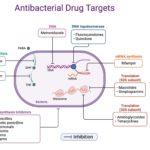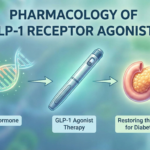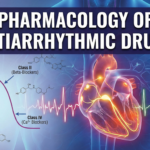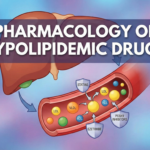Introduction
Structure-Activity Relationship (SAR) are an important aspect of chemistry that has been applied in many fields, particularly in drug design. It is a scientific method used to understand the relationship between the chemical structure of a compound and its biological activity. SAR provides a comprehensive understanding of how the structure of a molecule affects its pharmacological activity. This article will explore the importance of Structure-Activity and Relationships in chemistry and drug design.
Structure-Activity Relationship (SAR)
Definition
The Structure-Activity Relationship (SAR) is fundamental in medicinal chemistry and drug discovery. It describes the relationship between the chemical structure of a molecule and its biological activity. In other words, SAR helps to understand how molecular structure changes can influence a compound’s pharmacological effects.
Importance
SAR is crucial in drug discovery as it aids in designing and optimising new drug candidates. By understanding how specific structural features of a molecule contribute to its biological activity, researchers can design compounds with desired properties, such as improved potency, selectivity, or pharmacokinetic profile.
Key Concepts in SAR
Quantitative Structure-Activity Relationship (QSAR)
QSAR is an extension of SAR that uses mathematical models to describe the relationship between molecular structure and biological activity quantitatively. It involves the generation of predictive models based on molecular descriptors and experimental data, allowing researchers to predict the activity of untested compounds.
Ligand-Based Drug Design (LBDD)
LBDD is a computational drug design approach that relies on the knowledge of known active molecules (ligands) and their SAR. It uses the information to generate new molecules with desired properties without the need for detailed structural information about the biological target.
3D Pharmacophore Modeling
3D pharmacophore modelling is a technique used in SAR studies to identify the essential structural features required for biological activity. A pharmacophore is a spatial arrangement of chemical features that interact with a biological target. By creating a 3D model of the pharmacophore, researchers can predict the activity of new compounds and design novel drug candidates.
Molecular Descriptors
Physicochemical Properties
Molecular descriptors are numerical values that describe various aspects of a molecule’s structure. Physicochemical properties, such as molecular weight, lipophilicity, and hydrogen bond donor/acceptor count, are commonly used descriptors in SAR studies.
Topological Indices
Topological indices are another type of molecular descriptor derived from a molecule’s connectivity or topology. They capture various aspects of the molecular structure, such as branching patterns, cycles, and atom types, which can be correlated with biological activity.
SAR Methods and Techniques
Fragment-Based Approach
The fragment-based approach is a popular SAR method that involves breaking down a molecule into smaller fragments and analyzing their individual contributions to the overall biological activity. Researchers can design new compounds with improved properties by identifying the key fragments responsible for the activity.
Comparative Molecular Field Analysis (CoMFA)
CoMFA is a 3D-QSAR technique that examines the relationship between a series of compounds’ molecular fields (steric and electrostatic) and their biological activities. By analyzing the differences in molecular fields, CoMFA can identify regions where modifications to the structure could enhance or reduce activity, guiding the design of new drug candidates.
Comparative Molecular Similarity Indices Analysis (CoMSIA)
CoMSIA is another 3D-QSAR technique, similar to CoMFA, that considers additional molecular fields, such as hydrophobicity, hydrogen bond donor, and acceptor properties. It provides a more comprehensive understanding of the SAR, allowing for the development of more effective drug candidates.
SAR Studies in Drug Design
Lead Optimization
Lead optimization is a critical step in the drug discovery process, where the initial lead compounds are modified to improve their pharmacological properties. SAR studies play a crucial role in guiding the optimization process by identifying the structural features responsible for the desired activity and those that can be modified to enhance potency, selectivity, and other pharmacokinetic properties.
Target Identification
SAR studies can also assist in identifying the biological targets of active compounds. By examining the structural features that contribute to the compound’s activity, researchers can gain insights into the molecular interactions that occur between the compound and its target, guiding the selection of potential targets for further investigation.
Limitations of SAR
Despite its importance in drug discovery, SAR has its limitations. The complexity of biological systems can make establishing a clear relationship between molecular structure and activity challenging. Additionally, SAR models can sometimes be overly simplistic, failing to account for factors such as conformational changes, protein dynamics, and allosteric regulation.
The Future of SAR in Drug Discovery
Advancements in computational methods, machine learning, and molecular modelling are expected to further enhance SAR studies’ capabilities in drug discovery. These improvements will enable the development of more accurate and predictive models, facilitating the design of novel drug candidates with improved properties and a higher likelihood of success in clinical trials.
Conclusion
Structure, Activity, and Relationships (SAR) are fundamental concepts in drug discovery that help researchers understand the relationship between a molecule’s structure and its biological activity. By exploring key concepts such as QSAR, LBDD, and pharmacophore modelling, as well as various SAR methods and techniques, researchers can design and optimize drug candidates with desired properties. Despite its limitations, the future of SAR in drug discovery is promising, with advancements in computational methods and technology expected to improve its capabilities further.
Disclaimer: This article is for informational purposes only and should not be taken as medical advice. Always consult with a healthcare professional before making any decisions related to medication or treatment.
FAQs
- What is the Structure-Activity Relationship (SAR)?SAR is a concept in medicinal chemistry that describes the relationship between the chemical structure of a molecule and its biological activity.
- How is SAR used in drug discovery?SAR is used to design and optimize new drug candidates by understanding how specific structural features of a molecule contribute to its biological activity.
- What is Quantitative Structure-Activity Relationship (QSAR)?QSAR is an extension of SAR that uses mathematical models to quantitatively describe the relationship between molecular structure and biological activity.
- What are molecular descriptors?Molecular descriptors are numerical values that describe various aspects of a molecule’s structure, such as physicochemical properties and topological indices.
- What are the limitations of SAR?The limitations of SAR include the complexity of biological systems, overly simplistic models, and the inability to account for factors such as conformational changes, protein dynamics, and allosteric regulation.
📚 AI Pharma Quiz Generator
🎉 Quiz Results
Medical Disclaimer
The medical information on this post is for general educational purposes only and is provided by Pharmacology Mentor. While we strive to keep content current and accurate, Pharmacology Mentor makes no representations or warranties, express or implied, regarding the completeness, accuracy, reliability, suitability, or availability of the post, the website, or any information, products, services, or related graphics for any purpose. This content is not a substitute for professional medical advice, diagnosis, or treatment; always seek the advice of your physician or other qualified health provider with any questions you may have regarding a medical condition and never disregard or delay seeking professional advice because of something you have read here. Reliance on any information provided is solely at your own risk.









